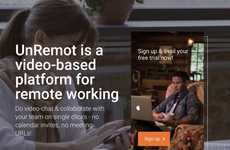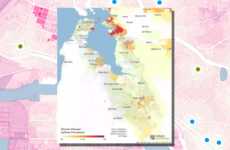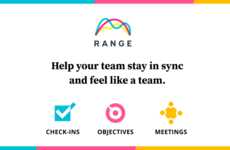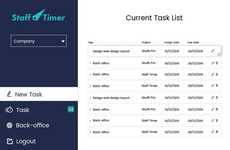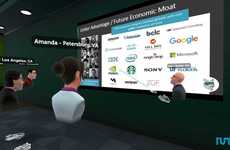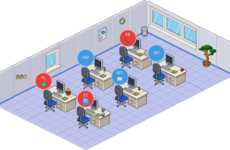



Remote meeting platforms are adapted with unique capabilities and formats
Trend - Brands are offering virtual platforms for team meetings that turn the traditional (in-person or online) meeting on its head. Varying formats like ongoing conversational "meetings" or virtual visualizations of office plans provide interpersonal and departmental collaboration, without employees being in the same physical space.
Insight - Remote work is increasingly common, particularly for small and medium-sized companies, as business owners look to increase accessibility, broaden the reach of their employees and the geography of who their hire, and look to avoid costly rent payments for office spaces. Though remote work comes with its downsides, businesses that prioritize inter-connectivity with tools that enable employees to best do their jobs from home are ensuring productive work environments.
Insight - Remote work is increasingly common, particularly for small and medium-sized companies, as business owners look to increase accessibility, broaden the reach of their employees and the geography of who their hire, and look to avoid costly rent payments for office spaces. Though remote work comes with its downsides, businesses that prioritize inter-connectivity with tools that enable employees to best do their jobs from home are ensuring productive work environments.
Workshop Question - How does your brand empower its customers to tackle challenges?
Trend Themes
1. Alternative Meeting Formats - Brands are creating virtual platforms for team meetings with unique capabilities that prioritize interconnectivity between remote employees.
2. Asynchronous Meeting Platforms - Platforms like 'Meetquo' enable remote teams to stay in continuous communication without dedicated meetings.
3. Instantaneous Video Call Platforms - 'UnRemot' is a video-based platform focused on accommodations for unscheduled interactions to help bridge the gap of office life.
Industry Implications
1. Digital Connectivity Tools - Companies can offer innovative digital tools for remote employees to create engaging workspaces that prioritize employee collaboration.
2. Remote Work Solutions - Businesses can integrate remote work solutions as part of their standard operating procedures to increase accessibility and broaden the reach of their employees.
3. Office Space Design - Office space designers can draw from virtual office visualization tools to better design workspace layouts that meet the needs of remote employees.
